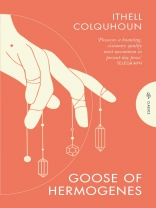A trancelike feminist fable of magic, alchemy, and the battle of the sexes by Britain's foremost surrealist painter
__________
‘Lurks somewhere between the territory of Beardsley and Mervyn Peake's Gormenghast … shudderingly enjoyable’ Guardian
‘The whole novel possesses a haunting, visionary quality most uncommon in present-day prose.’ Telegraph
‘Colquhoun is a painterly stylist, her surrealist visions shrouded in Celtic mists.’ TLS
__________
Calcination. Putrefaction. Exaltation. Trapped on an enchanted island ruled by her uncle, a young woman must pass through the stages of alchemical transformation to escape. He wants to conquer death by magic – and she may pay the price for his ambition.
Lushly visual, rife with symbols and cries from the unconscious, Colquhoun's first novel is a surreal feminist fable, and a supreme artistic vision.
Includes 'Hexentanz', a lost chapter from the original manuscript.
Sobre el autor
Ithell Colquhoun (1906-1988) was born in British India and brought up in the United Kingdom. She studied at the Slade School of Fine Art and started exhibiting her paintings in the 1930s, gaining some renown as one of the few women associated with British Surrealism. She began visiting Cornwall during the Second World War, and eventually moved there, continuing to write, paint, and pursue the study of the occult until her death. As well as her novel Goose of Hermogenes, she is the author of two travelogues, The Living Stones: Cornwall and The Crying of the Wind: Ireland, both forthcoming from Pushkin Press.












